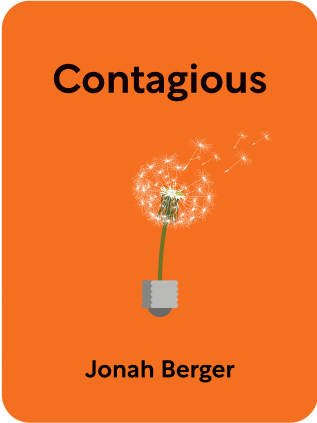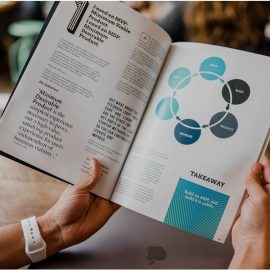

This article is an excerpt from the Shortform book guide to "Contagious" by Jonah Berger. Shortform has the world's best summaries and analyses of books you should be reading.
Like this article? Sign up for a free trial here .
What is emotional marketing? How does it work? What types of emotions should you target?
Emotional marketing involves appealing to the emotions of customers, specifically targeting strong feelings like anger, anxiety, awe, amusement, and excitement. Triggering these strong emotions will make people want to talk about your product and will therefore increase sales.
Learn how emotional marketing works below.
Emotional Marketing, Explained
The third attribute of contagious products and ideas is that they generate an emotional response. When people experience strong emotions, they often like to talk to others about how they’re feeling. For instance, someone who’s had a bad day at work will want to go home and vent their anger to their family. Someone who’s just gotten promoted will want to share their excitement with their loved ones.
When people do this, they inevitably share all the details about what made them so emotional in the first place. So, if you can make your product or idea generate an emotional response in people, it may get them talking not only about their feelings but also about your product or idea itself.
Which Emotions Should You Generate?
An important caveat when understanding emotional marketing is that not all emotions are equally effective at getting people to discuss your product or idea. Berger’s research found that only emotions that generate high amounts of physiological arousal push people to talk about how they’re feeling.
Physiological arousal is, in simple terms, your body being “activated”—being readied for action. Signs of physiological arousal include a racing heart, tensed muscles, sweaty palms, and a general feeling of your senses being heightened.
In the early days of the human race, physiological arousal readied us for the body’s fight-or-flight response. It prepared us to either run from predators or attack prey. These days, the responses that physiological arousal triggers are somewhat less life-or-death. When people are highly physiologically aroused, they may jump up and down on the spot, pace back and forth, or fidget.
Crucially, highly physiologically aroused people also tend to rush to tell others about the source of their arousal—the thing that’s got them so fired up. Therefore, if you can make your product or idea a source of high physiological arousal, you’ll get people talking about it and generate word of mouth.
So, which emotions generate high physiological arousal, and which don’t? According to Jonah Berger, the five main high-arousal emotions are anger, anxiety, awe, amusement, and excitement. These are the emotions to incorporate into your emotional marketing plan.
Meanwhile, low-arousal emotions include sadness and contentment. These emotions discourage action rather than drive it. For instance, sadness tends to de-energize the body. It makes people want to stay put on the couch and wallow, not rush about telling people about the source of their sadness. Likewise, contentment has a relaxing effect on the body. It makes people’s blood pressure go down and their heart rate decrease. People often want to relish this feeling of relaxation, not cut it short by snapping into action again.
Understanding the difference between high and low arousal emotions is key to marketing feelings successfully.
Marketing Feelings: How to Do It
You’ve learned which emotions will drive people to discuss your product or idea. Now, it’s time to explore how you can make your product or idea inspire these high-arousal emotions. The key to doing this is devising an emotional marketing strategy.
A lot of marketing strategies focus too much on information: on telling the consumer everything they need to know about the product or idea. Unfortunately, hearing lots of dry details about a product or concept is unlikely to inspire high-arousal emotions. It’s probably just going to bore people. Therefore, instead of bombarding consumers with information, give them the bare basics about your product or idea and focus the rest of your efforts on making them feel a high-arousal emotion.
For example, you could try to make people feel angry, which is a common tactic when trying to generate word of mouth around a charitable, social, or political cause. Another possibility is to focus on adding humor to your brand’s slogan, TV ads, or radio spots. This will help you generate amusement in your potential customers.
Finding the Right Emotion to Use
What if you’re not sure which emotion to use in your emotional marketing materials, or which emotion will be the most effective at generating interest in your product? How can you decide which emotion to use?
When answering this question, Jonah Berger takes his lead from Chip and Dan Heath and their work Made to Stick. The Heath brothers advise repeatedly asking yourself why people might want to use your product or adopt your idea. The first answer will likely be practical and related to the product or idea’s obvious purpose. But, keep digging deeper and deeper until you find the reason that’s emotion-driven. This will show you which feeling the product or idea ultimately relates to.
(Shortform note: For more on finding the right emotion to use in your marketing campaign, see our summary of Chip and Dan Heath’s Made to Stick.)
Capitalizing on Existing Physiological Arousal
If you’re really struggling to link your product or idea to a high-arousal emotion, consider trying to capitalize on existing physiological arousal instead. Make sure people see your product or hear about your idea when they’re already physically aroused. It doesn’t matter if your product or idea isn’t the source of the person’s arousal. When they’re already in the aroused state, they’ll rush to talk about any product or idea that’s presented to them. For example, you could place ads near a gym, as exercise is very effective at generating physiological arousal.
Try This Exercise: Emotional Marketing
Learn how to get people talking about a product or idea by making them feel a high-arousal emotion:
- Think of a product or idea that you’ve created or that you support. Describe this product or idea.
- Imagine you had to create an emotional marketing campaign about this product or idea. How could you incorporate a high-arousal emotion into this campaign? (For example, could you make your marketing materials amusing? If you’re trying to promote a cause, could you make your audience angry about the injustice you’re challenging?)
- After brainstorming, do you feel confident that this marketing campaign would get other people talking about the product or idea? Why or why not?

———End of Preview———
Like what you just read? Read the rest of the world's best book summary and analysis of Jonah Berger's "Contagious" at Shortform .
Here's what you'll find in our full Contagious summary :
- Why some new products and ideas gain widespread popularity while others fail
- The six principles to making your product or idea contagious
- The importance of word of mouth in marketing






